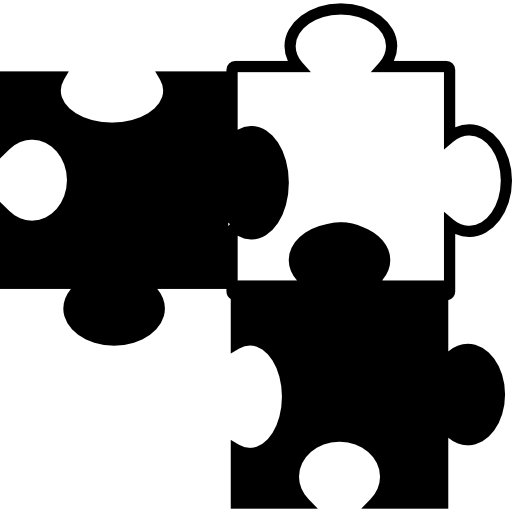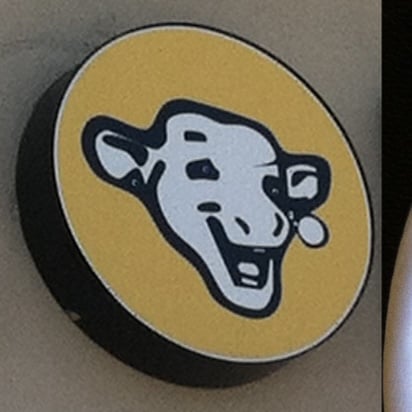They are going out of business and should be considered compromised by piracy. Buying a One Plus is supporting a global criminal organization.
𞋴𝛂𝛋𝛆
- 111 Posts
- 739 Comments
Need pics of TSA agents faces

 1·7 days ago
1·7 days agoI’ve seen a project that used a 72v meanwell that wasn’t but like 6-8 amps and an Arduino class controller with an old Cartesian gantry 3d printer. IIRC that was posted on hackaday within the last year but I don’t recall if it was fully documented.
There used to be a guy online selling old public domain and self published machine shop books like the old DIY gingery lathe shaper and mill plans and books. IIRC that had some kind of weird analog EDM plans that used a bucket of water and electrodes to create a large resistor or something odd like that.
From what I have seen in the past, EDM is not actually like HV plasma or high current like welding. The electrode is super close but not touching and the process is fairly slow. It is more like an HHO generator setup but an order of magnitude more focused on a point source. I know a coin can be used as an example. If the coin the the electrode, the face can be machined into something like the stamping die for a minting run.
I think it would be a cool process to integrate into 3d printed jigs and automation. Plus I like winding transformers and building power supplies out of junk.
★☆☆☆☆ – third rate Austin Powers cosplay
11.5 years mostly in bed so far here

 13·13 days ago
13·13 days agoWorks for everything else too.

 13·16 days ago
13·16 days agoWhen I was a kid I had great great grandparents I visited. There were old people that talked about up to 4 generations of great, so great great great great grandparents were still alive. Yes, I’m originally from Alabama.

 2·16 days ago
2·16 days agoYouTube has video nerds. There are very few advanced Makers on YT. People like Ben from Applied Science are on the short list. I tried making content for YT a few times but that is like a full time job. YT stopped promoting real low level Makers and community stuff around 2017. Prior to that I had something like 1k5 people I followed on there. When they got integrated into ISP with local caching they had to limit what people watched by promoting a much smaller slice. The result is that now advanced content is not promoted well. YT only wants people that can churn regular garbage like cable TV all over again. So he probably didn’t even know. Still his niche is in transferrable design for a farm and that can be interesting.

 2·16 days ago
2·16 days agoIf I was doing this design, I would build the fins from lower and taper pocket the bottom edge with a 45° pocket that enables them to print unsupported. It is possible to just leave a gap, or make a single wall riser near the tip to anchor the bridge but this will need printer and materials tuning with inconsistent results in my opinion. I think he was mostly showing off the abstract application of an unexpected idea people are likely to watch.
Ironing is as much about hardness as it is about smoothness. The extended heating will make the lower surface harder and might be workable on your home machine. Your flow rate in slicer settings will be critical for ironing because any bulldozing of material left behind will wreck you. Plus all that extra heat in a solid stack of layers is going to strongly promote warping.
If you’re really tight on clearance for something like this, I have used typical glue stick. You just add a print pause and either some tape or very carefully apply glue stick just to the overhang clearance with a 2 print layer height gap. The glue may take a day of soaking in water or alcohol to completely soften and dissolve, but that is basically poor-person dissolvable print supports. That trick is really only worth doing for stuff like mechanical prints you want to embed in an assembly with tight clearance. It is a pain in the ass and certainly not a transferable design for a farm or file sharing.

 1·16 days ago
1·16 days agoKinky dino porn is timeless. His name was Chad Johnson
Nah. Windows is stalkerware digital slavery of the soul. It comes back with shackles. The future will make this far more clearly the case.

 4·17 days ago
4·17 days agoJust do small test prints first. For a table saw feather board in PLA this worked but it is length and material dependant.


Calipers are consistent for the 2.6mm but too dead of a battery to charge the capacitive sensor past around 50mm so the scale shows ~63mm long. I think the optimum angle is around 30° but don’t quote me. I just imported an image of another feather board and used it to get basic working dimensions. You only need to know 1 measurement in a flat image in CAD to calibrate the size for use in the background to draw your sketches on top of. With a table saw feather board, you know the slot dimensions. You could easily screenshot the video’s sketch of the feather pattern here, import that and make a copy at any scale in FreeCAD. Mango Jelly has YT vids about this if you need them.

 7·17 days ago
7·17 days agoIt is an interesting approach to use feather fingers to hold a lid. That one has never occurred to me in design, but I loath thick useless walls like this.
He kinda touches on the way sharp corners are an issue because of the overlap in the extrusion diameter at the direction change. The overlap in circles is ignored in the slicer so there is always some amount of over extrusion in corners without a built in radius matched to the tessellation resolution and step accuracy of the machine.
Personally, I prefer to make a slightly larger clearance for such an interface. Then I use a small round dimple between the parts in the center of the long wall. Any long wall will have some flexible compliance at the center. I use a small 2-4mm diameter dimple that is padded/pocketed 0.5-1.0mm with a similar tolerance to the part. The subtlety of this feature is far less likely to disturb the outer part perimeter wall smoothness. The trick is to design the positive dimple pad with a closer tolerance to one side so that contact pressure is held to prevent looseness.

 5·19 days ago
5·19 days ago★★★★☆ Better than US Robots Inc. or Cyberdyne

 2·20 days ago
2·20 days agoTheir website has been janky. They have done stuff that is likely related to poor configurations of the server but appears to be exploitive. Their site hasn't had very good features for search either. Their search results are generally garbage in an authoritarian like attempt to salt your query with unrelated irrelevant garbage to milk ads. When they are unable to serve ads, they have tried to block access in the past. They seem under funded and likely have a mess of unmaintainable spaghetti code because when they make changes other stuff seems to break often. Downloading files from such a place is likely to be a major security risk.
Additionally, all of these file sharing websites are kinda a beginner’s thing. They are only really useful for trinket type sculpted objects. When it comes to functional prints, there is a lot of subtle details required for proper design. You will quickly learn that fasteners, and print tolerances required to replace metal fasteners is very print, material, and printer specific.
I know my exact tolerances in every orientation on my Prusa. When I design, these elements are built into that design. I do not care about calibration. Anyone that obsesses with calibration is doing so in order to transfer designs between machines. If you make your own designs you just need to dial in the tolerance locally. If you really need a 9.95mm part dimension with a 10mm slot in some object, it is extremely easy to do in CAD. Just print a unit test of a slice of the object in question in the same orientation and manually measure all relevant dimensions and tolerances. Let’s say you measure 9.98mm when you dialed it to 9.95mm. Which side needs to be adjusted might be a factor too. All you need to do is go into the CAD and change the dimensions to 9.92mm with the change oriented correctly.
By design these are ultimately precision machines without accuracy. The 0,0 home location is always different, but all motion is relative to this location. Calibration is trying to create transferable accuracy in a precision system. The deeper you get into this, the more it becomes an issue. Tesselated object files are also an extremely poor way of transferring designs because it bakes in the precision versus accuracy bias.
If you are unaware, the issue with files needing tessellation is because of π being infinite and all computers truncating infinite floating point values.
A slightly better solution for small file sharing is to post STEP files. These are the real dimensions with π as generated by the CAD hierarchical tree, but without the full tree. The STEP file can be imported in CAD and further refined through new operations and importing edges from the STEP file. However, if you go down this path, you will likely find that only beginners and extreme amateurs seem to share their designs even at this level of sharing STEP files or even the large CAD files too.
One of the most critical advanced CAD skills is knowing where to place an object’s origin and how to dimension everything relative to critical dimensions. This gets into the topological naming issue of how CAD works under the surface. Basically there are a ton of ways to do CAD wrong. There are many CAD operations that exist for very specific niche case reasons, but are never supposed to be used within the main hierarchical tree. If this is done wrong, it will create multiple stacked references to truncated π and this will break the CAD part every time, especially when making any further modification. I often have this happen at a couple of stages within my own very complicated designs. This is very typical in a CAD design workflow. The solution is to stop and rebuild the entire part from scratch while building the proper order of operations or a better origin for the part. I usually rebuild a part at least once or twice before printing complex stuff and assemblies.
In the past I tried printing stuff from places like thingiverse, but it was fiddly and nothing worked very well. I started importing them into FreeCAD and just rebuilding them with the part as a reference, but even this sucked. My only use for these websites now is for ideas I might integrate into my own designs. I can make anything in CAD properly and faster than I can print the whole thing twice. That is the full learning curve of 3d printer file sharing. It is also why selling files is not really a major business thing that takes off. That would only be possible with accurate machines. Precision is cheap, accuracy is not.

 31·23 days ago
31·23 days agoI’m too fragile IRL after a broken neck and back. I’m way above average for height and build, and not fat, but barely surviving sucks. Holding posture to sit or stand is extremely limited for me. I get injured by the dumbest seemingly inconsequential nonsense, like looking in the wrong direction can get me. I don’t know if I’d survive that depression fodder from the frustration of trying. So nope, I wouldn’t. She would probably kill me, but so would small king for that matter.

 36·23 days ago
36·23 days agoMost athletes make next to nothing. Like I worked with a 3 time Olympic track rider. At that level, the sport consumes your whole life just to complete at Olympics level. No one at the Olympics is making money at it. Everyone is broke and barely skating by. I worked with pro cycling teams and it was the same story for all, even many recognizable names are just poor people that love it in many cases. There are very very few big name celebrity types that actually make good money.










The article… Locking the bootloader is ceasing to sell a product that can be owned. It is a rental controlled by someone else actively, not just passively through a proprietary orphan kernel. It is action taken to filter, manipulate, and exploit. That is actually a soft coup against democracy itself, if you grasp the role of informed autonomous citizens and the reason ignorance is never an excuse in a democracy. The mechanism of trust is a fascist tool that is diametrically opposed to a liberal democracy. Trust in the chain of information flowing to a citizen is to subjugate and steal the right of citizenship. This is fundamentally simple with enormous implications. The naive stupidity of people blind to this fundamental issue is truly sad. The transition to actively exploiting the device, is to surrender democracy to a traitorous pirate if you purchase one of these. It is not small thing to shrug off. This is a pivotal moment and issue that will create an unimaginatively dark dystopia. The problem with coups is only the speed at which they are executed. This is a foundational cornerstone taken slowly where people are far to stupid to see it and resist in time to make a difference.